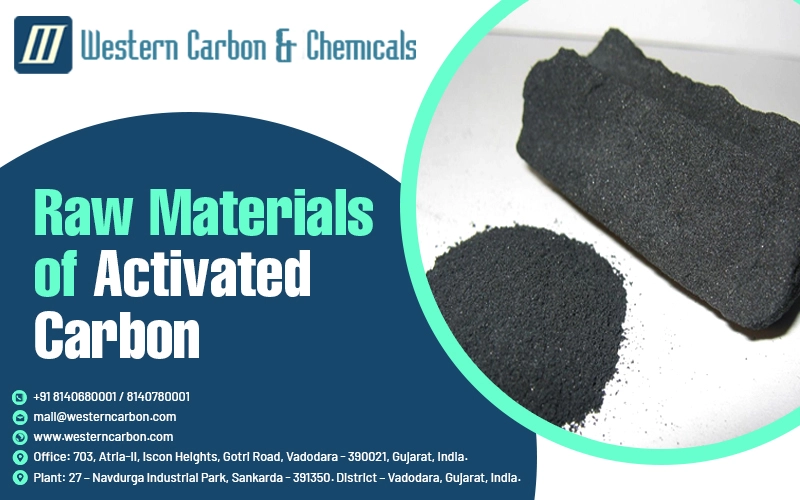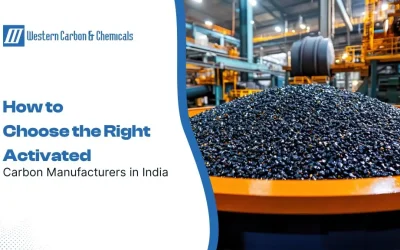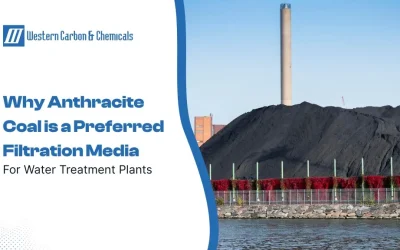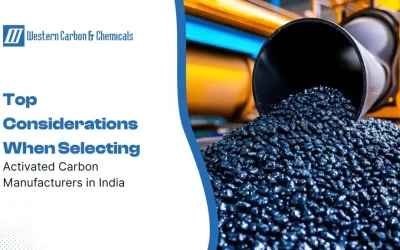Activated carbon is a highly carbonaceous material with a large surface area and microscopic pores. It is a versatile material that finds applications across different industries. Activated carbon is extensively used in water and air purification, pharmaceuticals, food & beverages and more. But how is activated carbon made? What are the raw materials of activated carbon? In this blog, we delve into the raw materials used to produce activated carbon, highlighting the significance of the characteristics and performance of the end product.
What is Activated Carbon?
Activated carbon, a porous material with a high surface area, pore structure, and high degree of surface reactivity, is used to purify, deodorize, and decolourize liquid and vapour applications. The raw material of activated carbon has a great influence on the quality and performance of the end product. Western Carbon & Chemicals, one of the top activated carbon manufacturers in India, ensures this quality and performance with our high-quality and effective activated carbon products, made using the right raw material and appropriate production methods.
Raw Materials of Activated Carbon
High-quality and optimal performance activated carbon can be obtained from with the right selection of raw materials and activated carbon production method. They are made from carbonaceous materials like coconut shells, wood, high-quality coal, fruit pits, bamboo, and other materials.
Coconut Shells
The coconut shell activated carbon is one of the most popular types of activated carbon. Coconut shells are the hard inner shells that hold the coconut kernel. They are odourless, and non-toxic, they are an ideal choice for industries with high safety requirements like food & beverages. If you are looking for a coconut shell activated carbon manufacturer for high-quality coconut shell-based products, contact Western Carbon & Chemicals.
Benefits of Using Coconut Shell for Activated Carbon
- High adsorption and desorption rate
- Large surface area
- Long service life and economic performance
- Eco-friendly and renewable
Wood
Wood-based activated carbon is made from an appropriately selected type of wood from trees, sawdust, and other wood products. They have a large surface area, low ash impurities, high purity, optimal filtration performance, strong adsorption capacity, and economic performance. Activated carbon made of wood is ideal for oil and gas recovery, air & water purification, sugar refining, and other industries.
Benefits of Using Wood for Activated Carbon
- High porous structure to effectively trap toxins
- Outstanding filtration capabilities
- Eco-friendly and sustainable
- Has a neutral pH and a high surface area
Mineral Carbon
Mineral-based activated carbon is made from coal like anthracite coal, bituminous & sub-bituminous, and lignite. Mineral carbon is an excellent choice in industries where a high level of adsorption is needed, like gas purification and wastewater treatment.
Benefits of Using Mineral Carbon for Activated Carbon
- Highly resistant to chemical attack
- Larger surface area and excellent adsorption capacity
- High-purity and filtration performance
- Low ash and low moisture
Buy Top-Notch Activated Carbon Products
Western Carbon & Chemicals is one of the most trusted activated carbon manufacturers in South Korea. We offer a wide range of activated carbon products customized to the surface area, adsorption capacity, mesh size, and other technical specifications. So whether you need activated carbon for water treatment, air purification, pharmaceutical, or other unique needs, get in touch with us to discuss your requirements.





